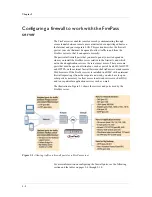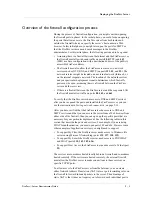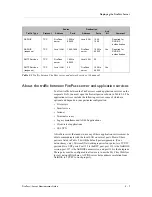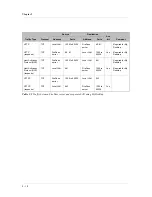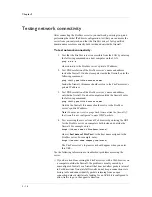
Chapter 2
2 - 2
Configuring a firewall to work with the FirePass
server
The FirePass server enables remote access by communicating through
secure tunnels between remote users at untrusted or unprivileged hosts on
the Internet and your corporate LAN. This section describes the firewall
ports at your site that must be opened to allow traffic to and from the
FirePass server so that it can operate correctly.
The particular firewall ports that you must open at your site depend on
where you install the FirePass server relative to the firewalls, and which
network and application services the server must access. There are some
ports that must be open in all situations, such as ports 80 and 443 for HTTP
and HTTPS, on the external firewall between the FirePass server and remote
Web browsers. If the FirePass server is installed in a DMZ with an internal
firewall separating it from the corporate network, you also have to open
other ports as necessary to allow access to network services such as DNS,
and to use particular application services such as e-mail.
The illustration in Figure 2.1 shows the services and ports used by the
FirePass server.
.
Figure 2.1 Allowing traffic on firewall ports for a FirePass server
For more information on configuring the firewall ports, see the following
section and the tables on pages 2-6 through 2-10.
Summary of Contents for FirePass
Page 1: ...FirePassTM Server Administrator Guide version 4 0 MAN 0081 00 ...
Page 2: ......
Page 4: ...ii ...
Page 5: ...Table of Contents ...
Page 6: ......
Page 12: ......
Page 18: ...Chapter 1 1 6 ...
Page 20: ......
Page 44: ...Chapter 2 2 24 ...
Page 46: ......
Page 82: ...Chapter 3 3 36 ...
Page 84: ......
Page 124: ......
Page 156: ...Chapter 5 5 32 ...
Page 158: ......
Page 168: ......
Page 177: ...Index ...
Page 178: ......















